Detention Reports Update: Fort Bliss Now Detaining Over 1,000 People + New Data and Enhanced Error Tracking
DetentionReports.com now updated with data through September 11, 2025, covering 197 facilities. New prominent data notes feature helps users identify known issues and methodology changes.
We’ve updated DetentionReports.com with the latest ICE detention data, now covering 197 facilities with information current through September 11, 2025. This update continues our commitment to providing timely, accessible data on ICE’s immigration detention system as it continues to expand nationwide.
For my analysis yesterday about the overall detention numbers, which currently stand at just under 59,000, visit my post from yesterday with graphics and source data that you can use in your own writing and reporting.
Facilities with Recent Population Spikes
Several facilities show notable increases in their detained populations according to the latest data. We encourage journalists, researchers, and advocates to explore these trends and share any additional information they may have about conditions or circumstances at these locations.
Key facilities showing recent spikes include
Adelanto ICE Processing Center in California
Honolulu Federal Detention Center in Hawaii
CCA, Florence Correctional Center in Arizona
Delaney Hall Detention Facility in New Jersey
DOD Detention Facility at Fort Bliss in Texas
Folkston D Ray ICE Process in Georgia
North Lake Correctional F in Michigan
The Fort Bliss facility is particularly notable as we’ve previously documented its role in detention operations.at that facility, that the Tien population has gone from zero to over 1000 in between the two detention data releases. Read the latest reporting on Fort Bliss from CBS News here: “New West Texas immigration detention facility is a giant tent city.”
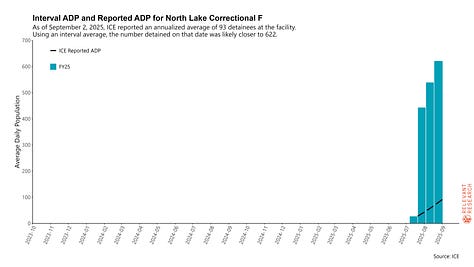
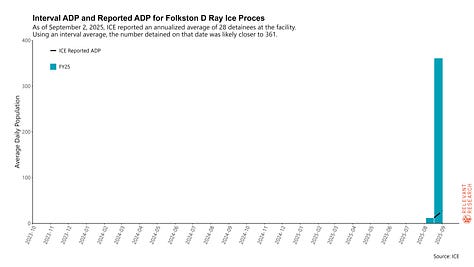
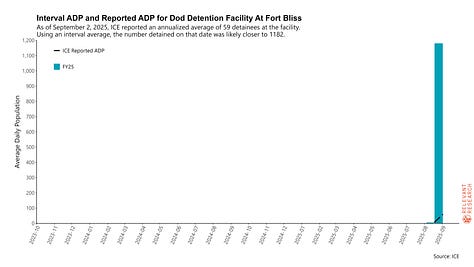
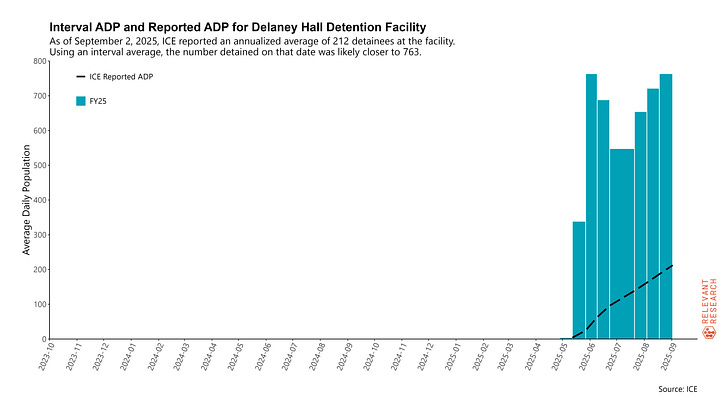
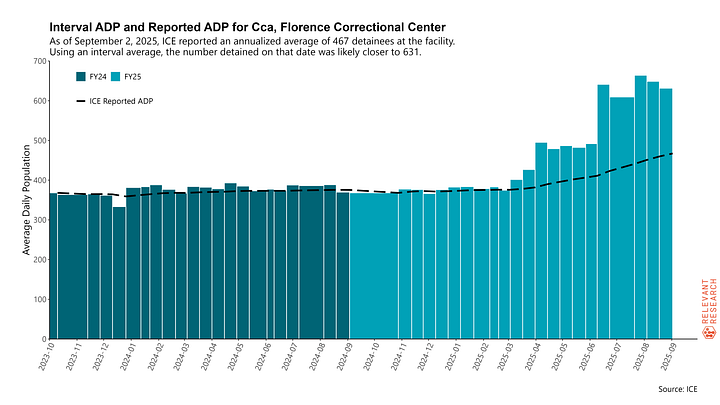
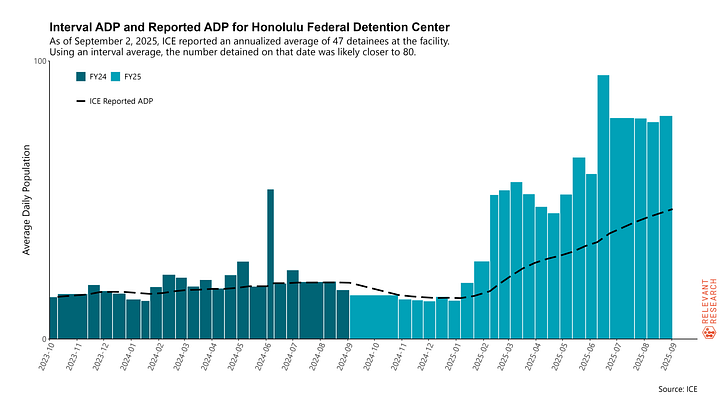

New Feature: Enhanced Data Processing Notes
The most significant addition to this update is a more prominent and comprehensive display of our data processing notes. Based on valuable user feedback since our initial launch, we’ve made these notes more visible and easier to access on the website.
These notes serve as a living document that addresses:
Known data errors or anomalies in ICE’s reporting
Inconsistencies we’ve identified in the source data
Methodology adjustments we make in response to changes in how ICE produces or formats its data
Facility exclusions based on our validation processes
As we’ve documented previously, ICE has released anomalous, empty, and inconsistent data in recent months. Our validation process helps identify these issues, and the enhanced notes feature ensures users can quickly understand any limitations or adjustments we’ve made to the data.
Background on Detention Reports
For those new to this tool, DetentionReports.com provides facility-level data on ICE detention centers using our Interval Average Daily Population (Interval ADP) method. Unlike ICE’s fiscal year averages that can obscure recent population changes, Interval ADP provides more accurate and timely estimates of current detention populations by calculating changes between the two most recent reporting periods.
The tool has already proven valuable to journalists and researchers. Recent reporting by The Guardian and HuffPost has incorporated DetentionReports.com data, while our analysis has helped document trends such as Louisiana’s growing role in ICE’s detention expansion and enforcement impacts in Southern California.
Help Us Improve
If you notice any issues on the website that aren’t reflected in our data processing notes, please don’t hesitate to reach out to Adam at adam@relevant-research.com. Your feedback continues to be invaluable in improving this resource for the public. As immigrant detention continues its dramatic growth, we remain committed to making this critical data as accessible and reliable as possible.
Join me in celebrating over 300 Substack posts and over 10,000 readers.
This newsletter is only possible because of your support. If you believe in keeping this work free and open to the public, join the 100% of surveyed paid subscribers who said this newsletter is a good steward of their investment. You can read more about the mission and focus of this newsletter and learn why, after three years, I finally decided to offer a paid option.




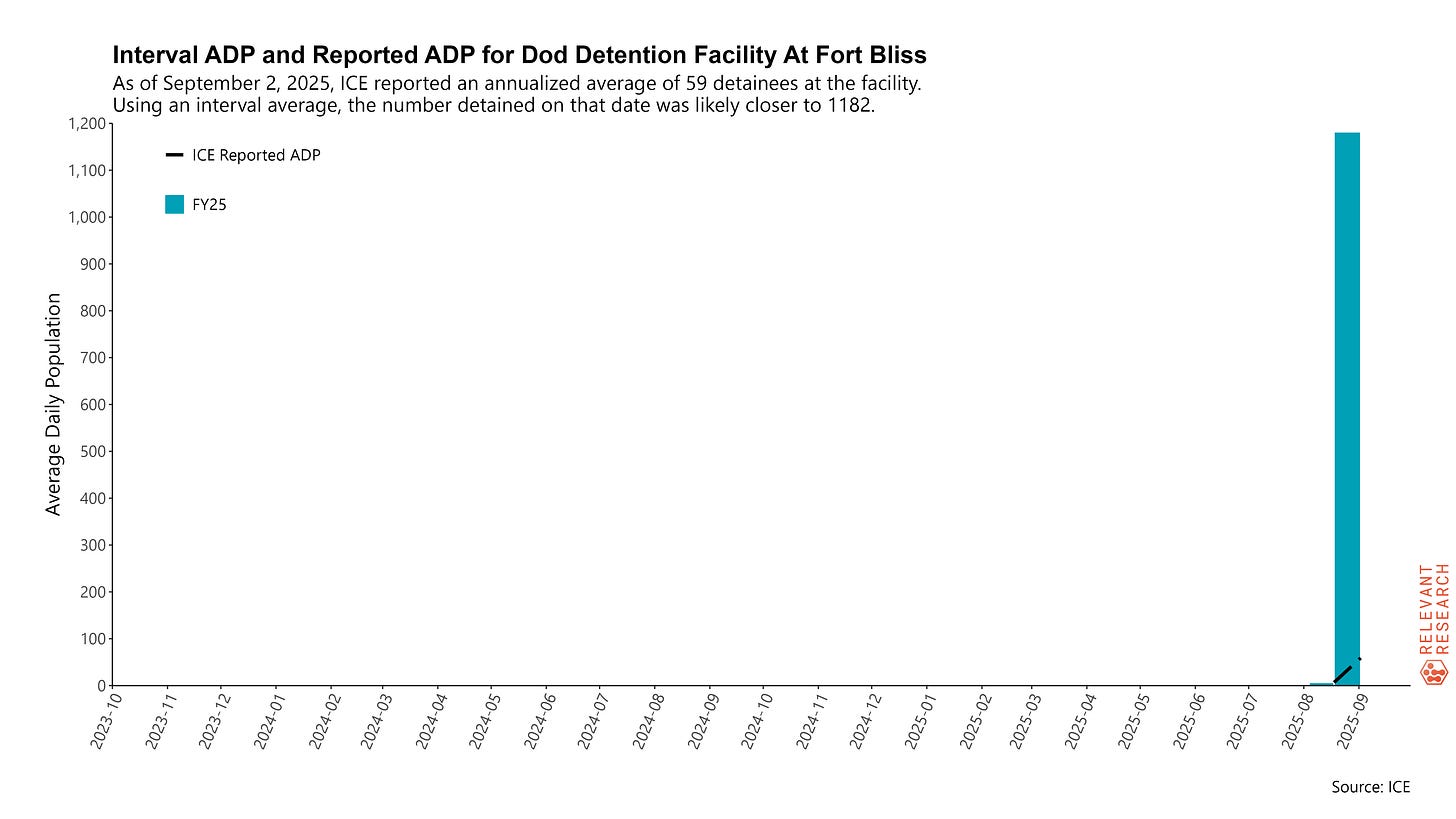



What numbers should I be looking at in the individual detention centers like Adelanto to see if the facility is currently over capacity?